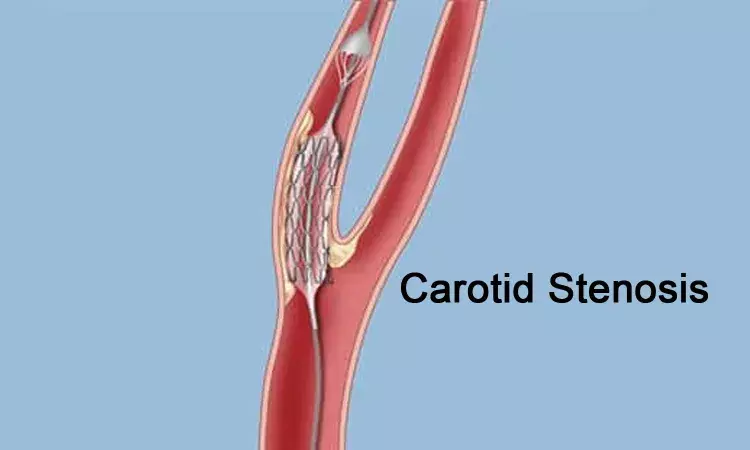- Home
- Medical news & Guidelines
- Anesthesiology
- Cardiology and CTVS
- Critical Care
- Dentistry
- Dermatology
- Diabetes and Endocrinology
- ENT
- Gastroenterology
- Medicine
- Nephrology
- Neurology
- Obstretics-Gynaecology
- Oncology
- Ophthalmology
- Orthopaedics
- Pediatrics-Neonatology
- Psychiatry
- Pulmonology
- Radiology
- Surgery
- Urology
- Laboratory Medicine
- Diet
- Nursing
- Paramedical
- Physiotherapy
- Health news
- Fact Check
- Bone Health Fact Check
- Brain Health Fact Check
- Cancer Related Fact Check
- Child Care Fact Check
- Dental and oral health fact check
- Diabetes and metabolic health fact check
- Diet and Nutrition Fact Check
- Eye and ENT Care Fact Check
- Fitness fact check
- Gut health fact check
- Heart health fact check
- Kidney health fact check
- Medical education fact check
- Men's health fact check
- Respiratory fact check
- Skin and hair care fact check
- Vaccine and Immunization fact check
- Women's health fact check
- AYUSH
- State News
- Andaman and Nicobar Islands
- Andhra Pradesh
- Arunachal Pradesh
- Assam
- Bihar
- Chandigarh
- Chattisgarh
- Dadra and Nagar Haveli
- Daman and Diu
- Delhi
- Goa
- Gujarat
- Haryana
- Himachal Pradesh
- Jammu & Kashmir
- Jharkhand
- Karnataka
- Kerala
- Ladakh
- Lakshadweep
- Madhya Pradesh
- Maharashtra
- Manipur
- Meghalaya
- Mizoram
- Nagaland
- Odisha
- Puducherry
- Punjab
- Rajasthan
- Sikkim
- Tamil Nadu
- Telangana
- Tripura
- Uttar Pradesh
- Uttrakhand
- West Bengal
- Medical Education
- Industry
Leisure time physical activity prevents stroke among patients with asymptomatic Intracranial arterial stenosis also

A new study published in the Journal of Stroke leisure time physical activity had role not only in secondary stroke prevention of intracranial arterial stenosis (ICAS), but the benefits of leisure time physical activity (LTPA) extend to asymptomatic ICAS as well. The study suggests that intracranial arterial stenosis (ICAS) that is ≥70% asymptomatic has the strongest association with leisure time physical activity (LTPA).
Although beneficial in secondary stroke prevention of intracranial artery stenosis, it is unknown if leisure-time physical exercise also improves ICAS or extracranial carotid stenosis patients who are asymptomatic (ECAS). In order to ascertain the association between LTPA and ECAS and ICAS in a stroke-free, racially and ethnically diverse group, Dixon Yang and colleagues undertook this study.
Participants from the Northern Manhattan Study's magnetic resonance imaging sub-study, of which 1274 underwent LTPA tests at enrolment, were included in this cross-sectional study. LTPA was ordinarily expressed as model-based cluster analysis (LTPA-cluster) and constantly as metabolic equivalent score (MET-score), both based on the identical LTPA tests. Using carotid intima-media thickness and the amount of carotid plaques, ECAS was assessed sonographically. ICAS was determined using a time-of-flight magnetic resonance angiography and was classified as having a stenosis of ≥50% or ≥70% or more. With confounders taken into account, regression models were used to assess the relationship between LTPA and ECAS and ICAS.
The key findings of this study were:
1. The mean MET-score for the 1274 subjects that were included was 10±16 , and 60% of them were in an LTPA-cluster with any activity.
2. The mean carotid intima-media thickness was 0.97±0.09 mm among individuals who underwent carotid ultrasonography (n=1234), and 56% of patients had at least one carotid plaque detected.
3. 8% of individuals with a magnetic resonance angiograph (n=1211) and 5% of those with a high-density ICAS (≥70%) had ICAS.
4. MET-score was connected to ≥70% of ICAS but not to ECAS measures for ICAS.
5. The connection between ≥70% ICAS and LTPA was repeated when MET-score was substituted with LTPA-clusters.
In conclusion, this well planned population-based imaging research demonstrated the advantages of doing enough exercise during downtime for persons with atherosclerotic disease, particularly for those with severe cerebral atherosclerosis.
Reference:
Yang, D., Liu, M., Willey, J. Z., Khasiyev, F., Tom, S. E., Rundek, T., Cheung, Y. K., Wright, C. B., Sacco, R. L., Elkind, M. S. V., & Gutierrez, J. (2022). Physical Activity Is Inversely Associated With Severe Intracranial Stenosis in Stroke-Free Participants of NOMAS. In Stroke. Ovid Technologies (Wolters Kluwer Health). https://doi.org/10.1161/strokeaha.122.039660
Neuroscience Masters graduate
Jacinthlyn Sylvia, a Neuroscience Master's graduate from Chennai has worked extensively in deciphering the neurobiology of cognition and motor control in aging. She also has spread-out exposure to Neurosurgery from her Bachelor’s. She is currently involved in active Neuro-Oncology research. She is an upcoming neuroscientist with a fiery passion for writing. Her news cover at Medical Dialogues feature recent discoveries and updates from the healthcare and biomedical research fields. She can be reached at editorial@medicaldialogues.in
Dr Kamal Kant Kohli-MBBS, DTCD- a chest specialist with more than 30 years of practice and a flair for writing clinical articles, Dr Kamal Kant Kohli joined Medical Dialogues as a Chief Editor of Medical News. Besides writing articles, as an editor, he proofreads and verifies all the medical content published on Medical Dialogues including those coming from journals, studies,medical conferences,guidelines etc. Email: drkohli@medicaldialogues.in. Contact no. 011-43720751


